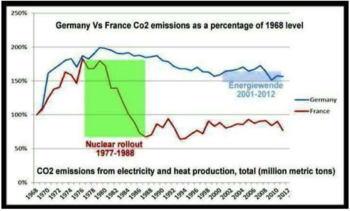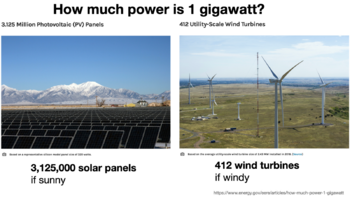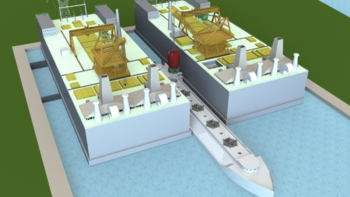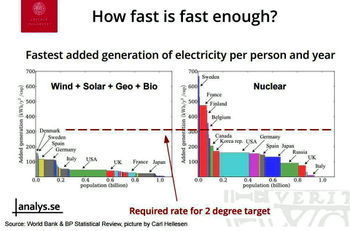Energy policy and global warming: Difference between revisions
No edit summary |
|||
| Line 12: | Line 12: | ||
This article is a brief review of the options for decarbonizing our world. | This article is a brief review of the options for decarbonizing our world. | ||
== The Magnitude of the Problem == | == The Magnitude of the Problem == | ||
Fig.1 | Fig.1 shows our current total worldwide consumption of electric power, with each bar a different region on our planet. The height of the bar is the average per person, and the width is the population of each region, so the area of the bar is a good visualization of total consumption for a region. The developing countries are expected to increase their consumption, perhaps to the level of Europe, or half the level of North America. That will put the total worldwide average power at 6300 GW, or more than twice our current level. | ||
Electric power is only a quarter of our CO2 problem. Decarbonizing transportation and process heat for industry will require new technology, perhaps carbon-free hydrogen. Fig.2 is one vision for the future. Abundant clean power could be used to generate a mix of electric power and hydrogen appropriate for each sector of the economy. | |||
== A Plan for the Future == | == A Plan for the Future == | ||
Revision as of 19:36, 1 June 2022
Climate scientists tell us that our consumption of fossil fuels is raising atmospheric CO2 levels, causing rapid global warming, and risking catastrophic climate change. Most people now accept these conclusions, but there is still debate over whether the replacement for fossil fuels should include nuclear power. Many believe that nuclear power cannot be made safe and clean.[1] Others believe that an energy policy that does not include nuclear is unrealistic. This article is a brief review of the options for decarbonizing our world.
The Magnitude of the Problem
Fig.1 shows our current total worldwide consumption of electric power, with each bar a different region on our planet. The height of the bar is the average per person, and the width is the population of each region, so the area of the bar is a good visualization of total consumption for a region. The developing countries are expected to increase their consumption, perhaps to the level of Europe, or half the level of North America. That will put the total worldwide average power at 6300 GW, or more than twice our current level.
Electric power is only a quarter of our CO2 problem. Decarbonizing transportation and process heat for industry will require new technology, perhaps carbon-free hydrogen. Fig.2 is one vision for the future. Abundant clean power could be used to generate a mix of electric power and hydrogen appropriate for each sector of the economy.
A Plan for the Future
Fig. 2, 3
The Problems with Wind and Solar Alone
- need for 100% fossil fuel backup - Fig.4
- use of land and mineral resources - Fig.5, 6
The Need for Immediate Action
Fig.7, 8
Further Reading
Electrifying Our World Robert Hargraves' excellent overview of energy, the growth human civilization, and possible solutions to the current climate crisis.
Our World in Data has a section on Energy and Environment with nice interactive graphics.
World Nuclear Information Library a well-organized authoritative collection of information on nuclear power.
Notes and References
- ↑ See Nuclear power reconsidered for discussion of these concerns.







